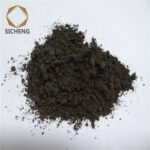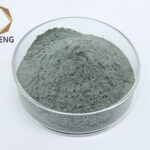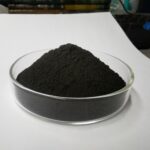Chromite sand is a naturally occurring mineral composed primarily of chromium oxide (Cr₂O₃) and iron oxide (FeO). It is derived from the mineral chromite, which is part of the spinel group. Chromite sand is widely used in industrial applications due to its unique properties, including high thermal conductivity, high melting point, and resistance to thermal shock and chemical corrosion.
Key Properties of Chromite Sand:
- High Melting Point: Chromite sand has a melting point of approximately 2,150°C (3,902°F), making it suitable for high-temperature applications.
- Thermal Conductivity: It has excellent thermal conductivity, which helps in efficient heat transfer during metal casting processes.
- Chemical Stability: Chromite sand is chemically inert and resistant to most acids and alkalis, making it ideal for use in foundries and refractory applications.
- Low Thermal Expansion: It exhibits low thermal expansion, reducing the risk of cracking or deformation during heating and cooling cycles.
- High Density: Its high density provides good mold stability and resistance to metal penetration.
Applications of Chromite Sand:
- Foundry Industry: Chromite sand is commonly used as a molding material in foundries for casting ferrous and non-ferrous metals. It is particularly useful for casting steel, where its high melting point and thermal stability are advantageous.
- Refractory Materials: Due to its high temperature resistance, chromite sand is used in the production of refractory bricks and linings for furnaces and kilns.
- Glass Manufacturing: It is used as a raw material in the production of certain types of glass, where its chromium content imparts specific properties.
- Chemical Industry: Chromite sand is used in the production of chromium-based chemicals and pigments.
- Abrasive Blasting: Its hardness and durability make it suitable for abrasive blasting applications, where it is used to clean and prepare metal surfaces.
Environmental and Health Considerations:
- Dust Control: Chromite sand can produce dust during handling, which may pose respiratory hazards. Proper dust control measures, such as ventilation and personal protective equipment (PPE), should be implemented.
- Chromium Toxicity: While chromite sand itself is relatively stable, the presence of hexavalent chromium (Cr(VI)) in some forms of chromium compounds can be toxic and carcinogenic. It is important to ensure that chromite sand is handled and processed in a way that minimizes the risk of exposure to harmful chromium compounds.
Sources and Production:
Chromite sand is typically mined from chromite ore deposits, which are found in various parts of the world, including South Africa, India, Kazakhstan, and Turkey. The ore is processed to remove impurities and produce high-quality chromite sand suitable for industrial use.
In summary, chromite sand is a valuable material in various industrial applications due to its high temperature resistance, thermal conductivity, and chemical stability. Proper handling and processing are essential to mitigate any potential health and environmental risks associated with its use.





